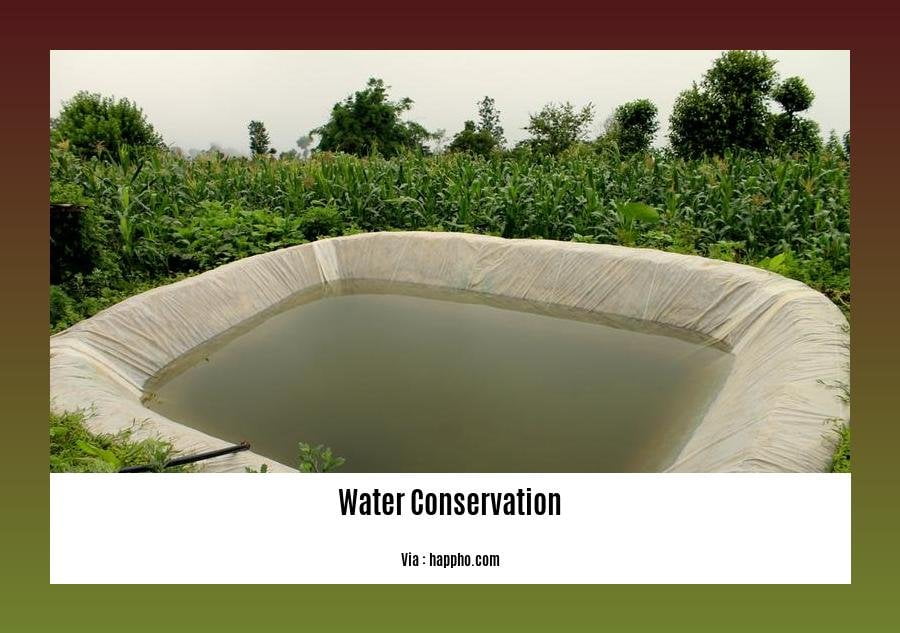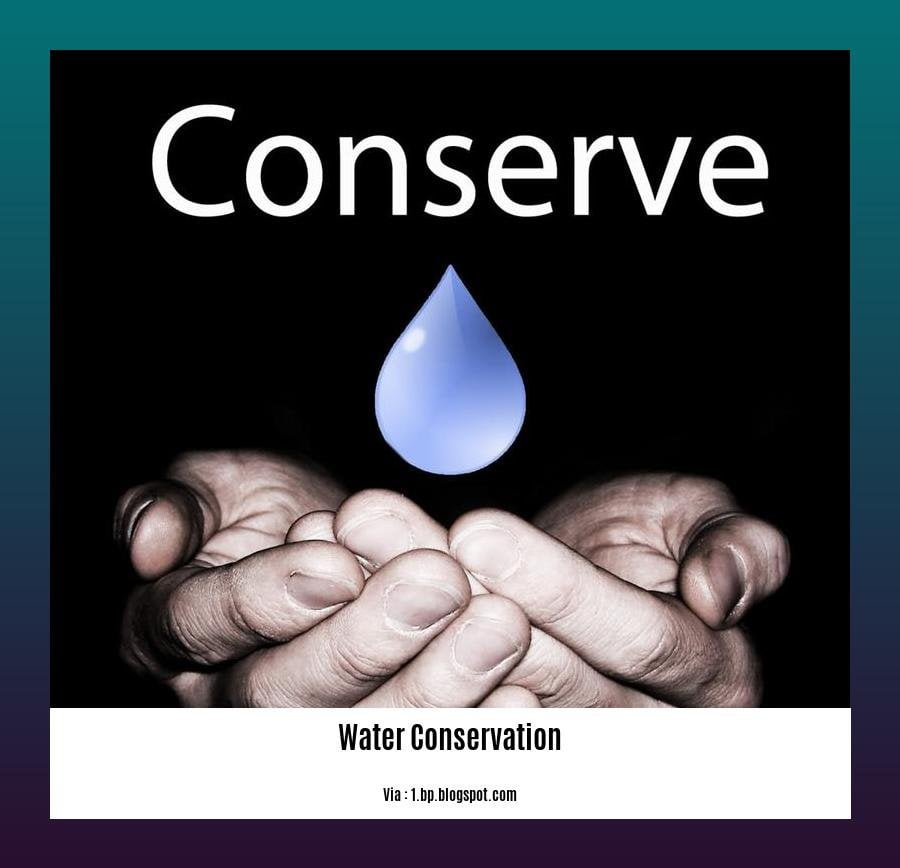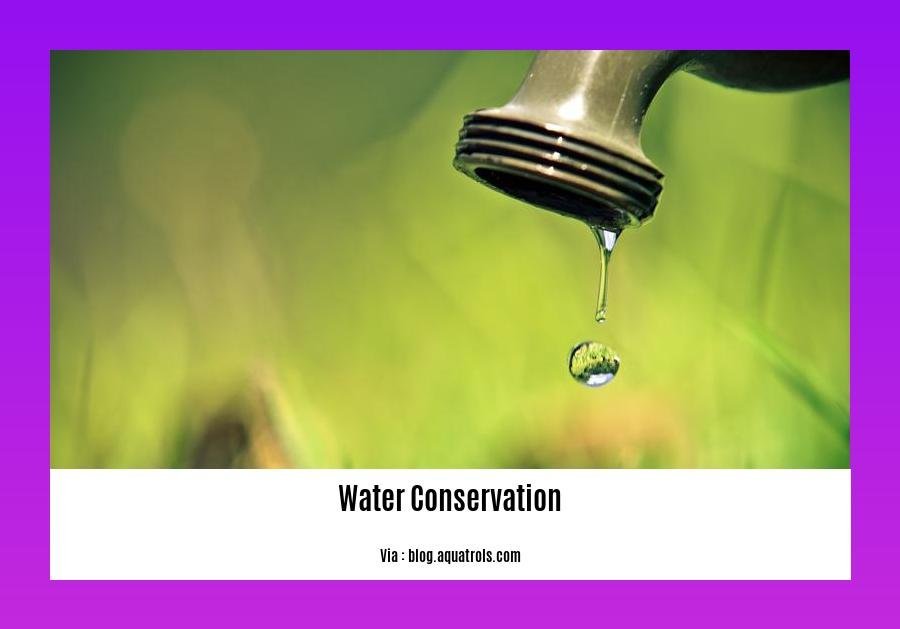The Overlooked Consequences: An In-depth Analysis of the Cons of Water Conservation
While water conservation efforts have long been lauded as essential tools in the pursuit of sustainable water management, it is vital to acknowledge that they do not come without their own set of consequences. As we strive to preserve this precious resource, it is imperative to take a closer look at the potential drawbacks associated with the well-intentioned act of conserving water. In this article, we will delve into the often overlooked negative impacts of water conservation, shedding light on the complexities that arise in our quest for a more sustainable future.
Key Takeaways:
- Water conservation plays a crucial role in minimizing the impact of drought and water shortages.
- It helps to reduce the costs associated with water treatment and delivery.
- Implementing conservation mandates can pose challenges for water managers due to a significant reduction in water flow through distribution systems.
- Rainwater harvesting, which involves the creation of ponds, lakes, canals, and installation of rainwater catching ducts and filtration systems, is an effective conservation strategy.
- Conservation and recycling strategies have a substantial impact on water consumption and source water usage.
- Water conservation is essential for promoting economic resilience, reducing expenses, and establishing a sustainable financial landscape.
Cons of Water Conservation

As we strive to combat water scarcity and minimize the negative impacts of drought, water conservation has become a crucial strategy. It offers benefits such as reducing costs associated with water treatment and delivery, promoting economic resilience, and creating a sustainable financial landscape. However, it is equally imperative to acknowledge the potential drawbacks and unintended consequences that can arise from water conservation efforts. In this article, we will explore the cons of water conservation and shed light on the often overlooked negative impacts.
Reduced Flow through Distribution Systems
One of the major challenges faced by water managers when implementing conservation mandates is the significant reduction in the flow of water through distribution systems. These systems are designed to deliver water efficiently to meet the demand of consumers. However, when water consumption is reduced, it can lead to lower flow rates and potentially stagnation in the distribution pipelines. This stagnant water can become a breeding ground for bacteria and other contaminants, posing a risk to public health. Addressing this issue requires careful planning and management to maintain the necessary flow and quality of water.
Rainwater Harvesting: Not Without Consequences
Rainwater harvesting is a popular strategy for water conservation. It involves collecting and storing rainwater for various purposes such as irrigation, toilet flushing, and washing. While rainwater harvesting can contribute to reducing water consumption and reliance on freshwater sources, it is not without its drawbacks.
The process of rainwater harvesting often requires digging ponds, lakes, canals, expanding water reservoirs, and installing rainwater catching ducts and filtration systems. These activities can have negative environmental impacts such as habitat destruction, alteration of natural drainage patterns, and disruption to ecosystems. Balancing the benefits of rainwater harvesting with its potential consequences is essential to ensure sustainable water management.
Impact on Source Water Usage
Conservation and recycling strategies can have a significant impact on the usage of source water. While reducing water consumption is vital, it can lead to a decrease in the extraction of water from natural sources. This reduction may seem positive at first, but it can have unforeseen consequences. Natural sources of water, such as rivers and aquifers, play crucial roles in supporting ecosystems and maintaining ecological balance. Altering the balance between human demand and natural water systems can result in ecological stress, affecting biodiversity and the overall health of ecosystems.
Balancing Conservation and Quality
Water conservation measures often focus on reducing water consumption without considering the potential impact on water quality. For example, in an effort to conserve water, some may resort to reducing the frequency of water treatment processes or decreasing the use of chemicals, disinfectants, and filtration systems. While this may save water, it can compromise water quality and increase the risk of waterborne diseases. Striking the right balance between conservation and maintaining high water quality standards is crucial for ensuring public health and safety.
The Importance of a Holistic Approach
Understanding the cons of water conservation helps us develop a more holistic approach towards sustainable water management. By critically assessing potential drawbacks, we can mitigate the negative impacts and design conservation strategies that strike a balance between protecting the environment, ensuring water quality, and meeting the needs of communities. It is crucial to consider the long-term consequences and unintended effects of any water conservation measure to ensure that our efforts truly achieve the desired outcomes without compromising other aspects of water management.
In conclusion, while water conservation is undoubtedly essential, it is vital to recognize its potential cons. Reduced flow through distribution systems, the environmental impact of rainwater harvesting, alterations in source water usage, and the need to balance conservation with water quality are all aspects that deserve careful consideration. By acknowledging and addressing these negative impacts, we can foster a more comprehensive and effective approach to water conservation and management.
Water pollution in the Philippines is a pressing issue that needs immediate attention. If you want to understand the causes of water pollution in the Philippines, click here to explore more.
Water pollution is also a significant concern in Zambia. Click here and learn about the causes of water pollution in Zambia to gain a better understanding of this problem.
Are you curious about the common water quality tests? Discover the various methods used to assess water quality by clicking here and stay informed about this essential aspect of environmental protection.
Increased Risk of Water Contamination

The push for water conservation has gained significant momentum in recent years, as communities and governments strive to address water scarcity and meet the rising demand for water. While conserving water is undoubtedly important for sustainable water management, it’s crucial to acknowledge that certain conservation strategies can have unintended consequences on water quality, leading to an increased risk of water contamination.
The Unintended Consequences
When implementing water conservation measures, it’s essential to consider the potential downsides and unintended consequences. While these strategies are successful in reducing water consumption, they can also inadvertently compromise water quality. This is particularly true in cases where conservation efforts focus solely on reducing water usage without adequately addressing water quality concerns.
Impacts on Water Quality
Water conservation measures can inadvertently increase the risk of water contamination due to several factors. One of these factors is the reduction in water flow through distribution systems. When water flow is significantly diminished, stagnant water can accumulate within pipelines and storage tanks. Stagnant water provides an ideal environment for microbial growth, potentially leading to the proliferation of harmful bacteria and pathogens. Consequently, the risk of waterborne diseases can escalate, posing a threat to public health.
Another key aspect to consider is the potential for cross-connections and backflow events. Inadequate backflow prevention systems or a lack of awareness about the risks can result in the contamination of the potable water supply. Cross-connection occurs when non-potable water sources, such as irrigation systems or industrial processes, come into contact with the drinking water supply. Without effective prevention measures, contaminants from these non-potable sources can flow backward into the potable water system, compromising its safety.
Water Quality Assessment
Despite the potential risks associated with water conservation efforts, there has been a notable lack of comprehensive assessment and research on the impacts of these measures on water quality. The health risks posed by implementing conservation strategies need to be thoroughly evaluated to ensure the safety and well-being of communities.
Climate Change and Water Quality
It’s essential to recognize that climate change can further exacerbate water-related challenges and impact water quality. Changing weather patterns and increased temperatures can influence the availability and quality of water resources. For example, rising temperatures can promote the growth of harmful algal blooms, leading to toxin contamination in water bodies. Additionally, extreme weather events, such as heavy rainfall or droughts, can disturb the balance of natural ecosystems, increasing the risk of water pollution and subsequent contamination.
It is clear that water conservation must be approached holistically to ensure both water quantity and quality are taken into account. Without considering water quality as an integral part of conservation strategies, the health and safety of communities can be compromised, undermining the very goals of sustainable water management.
Key Takeaways:
- Water conservation strategies can inadvertently lead to an increased risk of water contamination.
- Reduction in water flow through distribution systems can result in stagnant water, promoting microbial growth and potentially causing waterborne diseases.
- Inadequate backflow prevention can lead to the contamination of the potable water supply through cross-connections.
- There is a lack of comprehensive assessment and research on the impacts of water conservation measures on water quality.
- Climate change can further exacerbate water-related challenges and impact water quality, necessitating holistic approaches to water conservation.
Sources:
– Schwabe, K., Nemati, M., Amin, R., Tran, Q., Jassby, D. (2020). Unintended consequences of water conservation on the use of Web. Nature.
– Ahmed, T., Zounemat-Kermani, M., Scholz, M. (2020). Climate Change, Water Quality and Water-Related Challenges: A Review. National Center for Biotechnology Information.
Effect on Agricultural Productivity
Water conservation measures play a crucial role in addressing water scarcity and ensuring sustainable water management. However, it is important to acknowledge and understand the potential cons or drawbacks that these efforts may have, particularly in regards to agricultural productivity. By examining the effect on agricultural productivity, we can gain a more holistic understanding of water conservation’s impact on one of the most vital sectors of our society.
Water Scarcity and Agricultural Productivity
Water scarcity poses a significant challenge to agriculture, impacting both ecosystem health and human survival. Excessive freshwater consumption leads to a scarcity in the circulation rate, affecting the availability of water for agricultural activities. This temporal variability of rainfall in rainfed regions is a primary factor for low agricultural productivity.
The Importance of Efficient Water Management
Efficient management and conservation practices for agricultural water use are essential for adapting to and mitigating the impacts of water scarcity. Conservation agriculture, which focuses on improving crop productivity and water-use efficiency, can be a valuable strategy in this context. Integrating rainfed agriculture with conventional farming practices can also serve as a solution to water shortages.
Understanding Water-Related Challenges
To fully comprehend the effect on agricultural productivity, it is necessary to explore the relationship between water and productivity. Examining methods for improving agricultural water usage efficiency can shed light on potential drawbacks. Additionally, climate smart agriculture practices have impacts on soil water and agricultural productivity, highlighting the need for comprehensive strategies.
Key Takeaways:
- Water scarcity affects agricultural productivity, hindering both ecosystem health and human survival.
- Efficient management and conservation practices are crucial for adapting to water scarcity.
- Conservation agriculture and integrating rainfed agriculture can improve crop productivity and water-use efficiency.
- Understanding the relationship between water and productivity is essential for sustainable water management.
- Climate smart agriculture practices can have significant impacts on soil water and agricultural productivity.
Sources:
– Water Productivity in Agriculture: A Key to Improving Efficiency
– Impacts of Climate Smart Agriculture Practices on Soil Water
Economic Implications and Potential Job Losses
Water conservation is undoubtedly a crucial aspect of sustainable water management. It offers significant benefits such as reduced water costs and addressing the global issue of water scarcity. However, it is essential to acknowledge the potential economic implications and job losses associated with water conservation efforts. By understanding these aspects, we can develop more comprehensive and balanced strategies to achieve long-term sustainability.
The Economic Impact of Water Scarcity
Water scarcity has severe negative economic impacts. When water resources become limited, it can lead to a loss of surplus and environmental degradation. One of the sectors heavily affected by water scarcity is agriculture. Reduced water availability, environmental degradation, and the loss of agricultural land contribute to declining crop yields and reduced agricultural productivity. This not only affects farmers but also hampers food production and overall economic growth.
Additionally, reduced freshwater resources can restrict production in various industries, impacting their competitiveness and cost structures. Multinational corporations face challenges in controlling expenses as the price of water rises dramatically amid scarcity. Thus, water scarcity increases operational costs, compromises economic growth, and affects household discretionary income.
Impacts on Business and Competitiveness
Water scarcity affects the competitiveness of businesses in multiple ways. The decline in water flows in interconnected systems, such as rivers and lakes, can impact irrigation, groundwater recharge, and recreational services. This can directly impact industries reliant on these water sources, leading to decreased production and revenue.
Moreover, the formulation and implementation of water laws are inherently linked to the adoption of water conservation practices. While these regulations are essential for sustainable water management, they may result in increased costs for businesses, further impacting their competitiveness.
Unintended Consequences on Water Quality and Treated Wastewater
Water conservation efforts can also have unintended consequences on water quality. For example, as we decrease water consumption through conservation measures, there may be an increase in the use of treated wastewater. While treated wastewater can be a valuable resource, improper management or inadequate treatment processes can compromise water quality and increase the risk of waterborne diseases.
It is crucial to note that access to clean and safe water is a fundamental human right, and any compromise on water quality can have dire health consequences for communities.
In considering the economic implications and potential job losses associated with water conservation, we need to strike a balance between conserving water resources and addressing the socio-economic needs of communities. This requires a holistic approach that not only focuses on reducing consumption but also emphasizes water quality, economic sustainability, and job creation.
Key Takeaways:
- Water scarcity has significant negative economic impacts, ranging from reduced agricultural productivity to increased operational costs for businesses.
- Water shortages restrict production, lower household discretionary income, and compromise food security.
- The formulation and implementation of water laws may lead to increased costs for businesses and affect their competitiveness.
- Water conservation efforts can have unintended consequences on water quality, particularly when treated wastewater is utilized.
- Balancing water conservation with economic considerations is crucial for achieving sustainable water management.
Sources:
- The Economics of Water Conservation Cost and Benefits
- Unintended consequences of water conservation on the use of treated wastewater
FAQ
Q1: What are the potential drawbacks of water conservation efforts?
A1: Water conservation efforts can have unintended consequences on water quality, increase the risk of water contamination, and pose health risks that have not been thoroughly assessed.
Q2: How does water scarcity impact agriculture?
A2: Water scarcity leads to reduced water availability for agriculture, environmental degradation, loss of agricultural land utilization, and lower crop and animal productivity due to poor water quality.
Q3: What are the economic impacts of water scarcity?
A3: Water scarcity has negative economic impacts, including higher water costs, reduced agricultural production, loss of surplus, declining water flows affecting irrigation and recreation, increased operational costs for businesses, and challenges for multinational corporations in controlling expenses.
Q4: Can water conservation measures affect the use of treated wastewater?
A4: Yes, water conservation measures can have unintended consequences on the use of treated wastewater, which may impact water reuse and recycling efforts.
Q5: How does climate change exacerbate water-related challenges?
A5: Climate change affects water availability and quality, further exacerbating water-related challenges such as scarcity, contamination, and the need for sustainable water management practices.
- Unlock 6000+ words beginning with he: A comprehensive analysis - April 20, 2025
- Mastering -al Words: A Complete Guide - April 20, 2025
- Master Scrabble: High-Scoring BAR Words Now - April 20, 2025
















